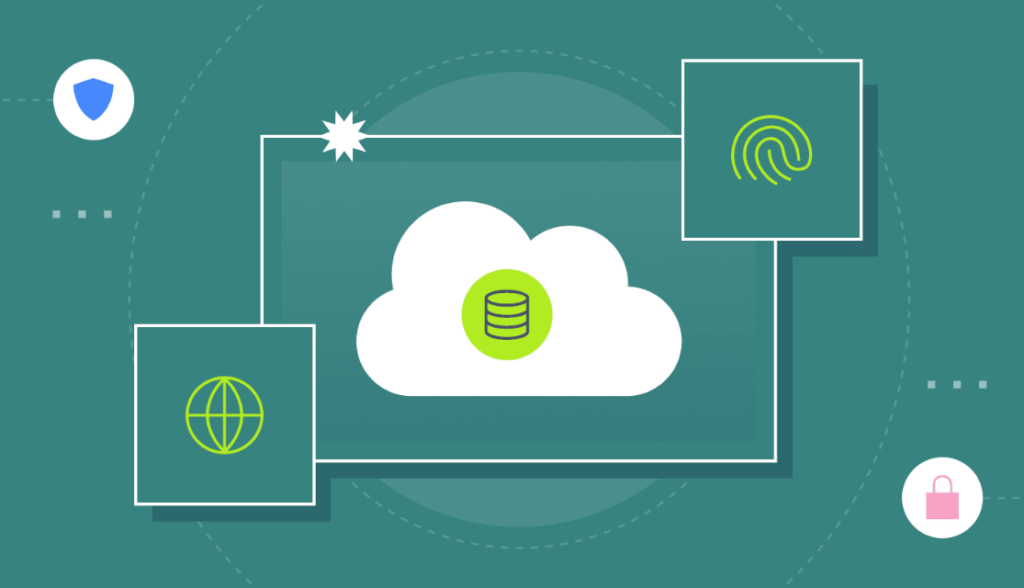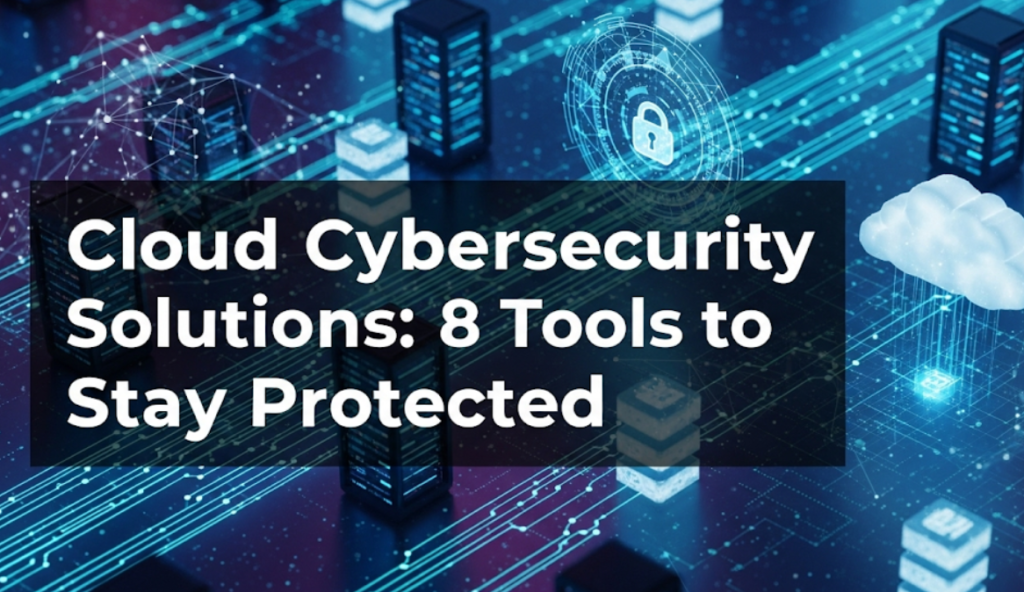The Reasons Why Your Business Needs Great Cloud Security Today
It is unbelievable how beneficial the move of your business to the cloud is. It gives you increased flexibility, reduced expenses, and simplified access to your information. Yet, it also creates additional opportunities in the hands of hackers and cybercriminals.
It is now necessary to have cloud cybersecurity solutions in place in any business that makes use of cloud services. Your sensitive data can get stolen, your systems can be hacked, or your business can go through expensive downtime without proper protection.
Think about it this way. Do you leave your house unlocked when going on holiday? Of course not. The same reasoning can be applied to your cloud data. You must have good security software to lock out the bad guys.
In this article, you will learn how to use 8 effective tools to secure your cloud infrastructure. We will describe what each tool is and why you will need it, and how it will keep your business safe.
What is the Difference Between Cloud Security and Regular Security
Cloud security does not look like old-fashioned computer security. After storing your data in the cloud, it is subject to its special challenges.
One, there is your data going over the internet. This leaves more chances of hackers intercepting it. Second, you are sharing cloud resources with other firms. A single weak point would have an impact on everyone.
Third, cloud environments are dynamic. There are new servers being brought online and being brought down. This complicates the monitoring of the things that should be guarded.
Conventional security products were not designed to overcome these issues. And that is why there are special cloud cybersecurity solutions. They are cloud-native.
The True Price of Poor Cloud Security
Lack of cloud security will ruin your business. Here are some scary numbers:
- The mean breach of data costs $4.45 million
- Over three-quarters of organizations (83 percent) have had more than one data breach
- On average, it takes 277 days to detect a breach and contain it
But money isn’t the only cost. You also risk:
- Lost customer trust
- Damaged reputation
- Legal troubles
- Business downtime
- Regulatory fines
A large-scale security attack can wipe you out. This is why it is important to invest in effective cloud cybersecurity solutions.
The Best 8 Cloud Cybersecurity Solutions for the Highest Level of Protection
1. Cloud Access Security Brokers (CASB)
CASBs are placed between users and cloud apps. They track all that occurs and implement security policies.
Imagine that CASB is a security guard at the door of a building. They inspect all people who want to enter and ensure they act in accordance with the regulations.
Key Features:
- Cloud activities monitoring in real-time
- Data loss prevention
- User behavior analytics
- Enforcement across various clouds
Popular CASB Tools:
- Microsoft Cloud App Security
- Netskope
- Forcepoint CASB
- Symantec CloudSOC
CASB tools give you an overview of what is going on in your cloud environments. They are able to identify suspicious activities that could be an indicator of a security threat.
2. Cloud Security Posture Management (CSPM)
CSPM tools continuously scan your cloud configuration to identify security weaknesses. They act as a security expert monitoring your systems 24/7.
The tools seek common issues such as:
- Wrongly set up storage buckets
- Weak access controls
- Missing security updates
- Exposed databases
Top CSPM Solutions:
- Palo Alto Networks Prisma Cloud
- AWS Security Hub
- Azure Security Center
- Google Cloud Security Command Center
The reason why CSPM tools are required is that human error is the culprit in 95% of cloud security failures. They are able to identify mistakes before hackers do.

3. Identity and Access Management (IAM)
IAM controls access or denial to your cloud resources. It is the key system that has intelligence over your whole cloud system.
The principle of least privilege is good IAM practice. This means individuals can only have access to what they require for their job.
Core IAM Functions:
- User authentication
- Role-based access control
- Multi-factor authentication
- Single sign-on (SSO)
Leading IAM Platforms:
- Okta
- Azure Active Directory
- AWS Identity and Access Management
- Ping Identity
Your initial defense is strong IAM. Even if hackers access user credentials, IAM can restrict them.
4. Cloud Workload Protection Platforms (CWPP)
CWPP solutions secure your workloads and applications in the cloud. They are similar to antivirus programs, but cloud-specific.
These are systems that scan your applications live to check against threats. They are able to identify and prevent attacks before they occur.
CWPP Capabilities:
- Runtime application protection
- Vulnerability scanning
- Compliance monitoring
- Incident automation
Top CWPP Tools:
- Trend Micro Cloud One
- Aqua Security
- Twistlock (now Prisma Cloud)
- Sysdig Secure
CWPP tools are essential since traditional endpoint security does not perform well in the cloud.
5. Cloud Network Security Solutions
Your cloud network must be secured in the same way your office network is. Cloud network security systems build virtual firewalls and track traffic flow.
They are able to detect suspicious network traffic and prevent suspicious connections automatically.
Network Security Features:
- Virtual firewalls
- Network segmentation
- Traffic monitoring
- DDoS protection
Top Network Security Tools:
- AWS Network Firewall
- Azure Firewall
- Google Cloud Armor
- Cloudflare
Network security provides obstacles that ensure attackers find it more difficult to navigate within your cloud environment.
6. Data Encryption and Key Management
Encryption will scramble your data so that only people who are supposed to see it will be able to. Hackers cannot make use of encrypted information even when they steal it because they will not have decryption keys.
These encryption keys are kept safely in key management systems.
Encryption Best Practices:
- Encrypt data at rest
- Encrypt data in transit
- Apply high encryption levels
- Change encryption keys frequently
Top Encryption Solutions:
- AWS Key Management Service
- Azure Key Vault
- Google Cloud Key Management
- HashiCorp Vault
Consider encryption to be placing your information in a locked safe. Thieves may enter your home, but without the combination, they cannot unlock the safe.
7. Security Information and Event Management (SIEM)
SIEM devices collect security data across your cloud landscape. They process this information to identify threats and suspicious behavior.
These systems are applications that resemble smart AI security cameras. They observe everything and tell you when something doesn’t look right. For businesses looking to implement AI-powered cybersecurity solutions, SIEM represents a crucial first step in building intelligent threat detection capabilities.
SIEM Capabilities:
- Log collection and analysis
- Real-time threat detection
- Incident investigation
- Compliance reporting
Popular Cloud SIEM Solutions:
- Splunk Cloud
- IBM QRadar
- Microsoft Sentinel
- Sumo Logic
SIEM devices help you see what is going on in your cloud-based environment. They convert raw security data into insights.
8. Backup and Disaster Recovery Solutions
Backup solutions make duplicate copies of your valuable information and save it in a safe place. In case of an eventuality, you can recover your data and resume business.
Backup is not disaster recovery. It also has plans and tools to ensure your business continues running even during a security incident.
Key Features:
- Automated backups
- Point-in-time recovery
- Synchronization with replication in different locations
- Recovery testing
Leading Backup Solutions:
- Veeam Cloud
- AWS Backup
- Azure Backup
- Google Cloud Backup
Think of backup as insurance for your data. It is something you hope you will never have to use, but you’ll be thankful to possess it should a disaster occur.
Which Cloud Security Tools Should You Select?
The choice of the appropriate cloud cybersecurity solutions will be based on a few factors:
Consider Your Cloud Setup
- What cloud platforms are you using?
- How complex is your environment?
- What kind of data do you have?
Think About Your Industry
- What regulations cover your business?
- What are the threats within your industry?
- What compliance needs do you need to satisfy?
Evaluate Your Resources
- How much do you have to spend on security?
- Are you employing security professionals?
- How complex are your requirements?
Start with the Basics
Start with basic protection features such as IAM and encryption. Add more sophisticated tools as you need them.
Creating an End-to-End Cloud Security Strategy
Possessing the right tools is not an end in itself. You must also have a good security plan.
Create Security Policies
Formulate specifications for how people are supposed to use cloud resources. Ensure that everyone understands these policies.
Train Your Team
Educate employees on cloud dangers. A large number of security accidents occur due to human errors.
Monitor Everything
Use your security tools for constant monitoring regarding threats. Establish notifications to become aware of issues immediately.
Plan for Incidents
Develop a response strategy for when security incidents occur. This plan must be practiced so that everyone is aware of their role.
Review and Update
Security threats are perpetually evolving. Check your defenses and keep them current.
Top Security Errors to Avoid in Cloud Computing
Despite having excellent tools, business ventures continue to commit security errors. Here are the most common ones:
Misconfigured Settings
Default cloud setups tend to be insecure. Security configurations should always be reviewed and changed.
Weak Passwords
Use strong passwords and multi-factor authentication on all cloud accounts.
Too Many Permissions
Users should not have more access than necessary. Periodically review access controls and clean up unwanted access.
Ignoring Updates
Make sure you update your security tools and cloud services with the most recent patches.
Poor Visibility
You can never defend something that you cannot see. Ensure that you have full visibility of your cloud environment.
Cloud Cybersecurity Solutions: The Future
Cloud security is changing very quickly. Here are some trends to watch:
AI-Powered Security
Security tools will be smarter with artificial intelligence. They will be better positioned to detect threats and automatically act. According to the NIST Cybersecurity Framework, organizations should adopt AI-enhanced security measures to stay ahead of evolving threats.
Zero Trust Architecture
The zero trust model presupposes that everything is potentially dangerous. It checks and validates everything.
Edge Security
As additional computing occurs at network edges, security tools will be required to secure these distributed environments.
Automated Response
Security tools will learn how to react to threats more effectively automatically, without human involvement.
These developments will ensure cloud cybersecurity solutions are more efficient and convenient.
Getting Your Investment to Pay Off
Cloud security tools are an investment in the future of your business. They secure your most precious asset: your data.
When comparing costs, keep in mind that security incidents prove more costly than prevention. One major attack is all it takes to justify a good investment in security.
Look for tools that offer:
- Simple interoperability with your other systems
- Growth capability as you expand
- Strong customer support
- Continuous updates and advancement
Do not attempt to save money by not purchasing necessary security tools. The risks are too high.

Frequently Asked Questions
Q: How much should I spend on cloud cybersecurity solutions? A: Most experts recommend allocating 10-15 percent of your IT budget to security. This percentage can be even greater for cloud-first businesses.
Q: Can I use free cloud security tools? A: There are some free tools available, but they tend to have limited functionality. Business applications are usually more securely supported and protected with paid solutions.
Q: How regularly should I check my cloud security configuration? A: Test your security posture at least every quarter. Reviews should also be made after significant modifications to your cloud environment.
Q: Do I need all 8 types of security tools? A: Not necessarily. Prioritize those that are most important to your business (such as IAM and encryption), and add others as you need them.
Q: Can small companies afford enterprise cloud security tools? A: Multiple vendors offer small business versions. Enterprise-grade protection also becomes cheaper when delivered via cloud-based security services.
Q: How do I know whether my existing cloud security is sufficient? A: Have a security company perform a penetration test or security assessment. This will show the weak points in your existing defenses.
Q: What is the largest security threat in clouds currently? A: The number one threat is misconfigured cloud settings. Most security breaches in the cloud can be attributed to human error.
Q: Should I hire a security expert or rely on managed services? A: This depends on your needs and budget. Smaller businesses can find managed services relatively affordable, while larger companies require internal expertise.
Act to Save Your Business Now
Cloud security solutions are no longer a luxury; they are a necessity to survive in business. The dangers are very real, and they are increasing day by day.
Begin by understanding your security posture. Find out what your biggest weaknesses are and deal with them. Note: You do not need to implement everything immediately.
Simple measures such as strong access controls and encrypted data should be taken first. Gradually add more advanced tools to your security program.
The key is to start now. The more days you wait, the more days your business will be exposed to attack.
Your customers put their data in your hands. Your employees are relying on you as a means of livelihood. Do not disappoint them by compromising security.
Today, invest in adequate cloud cybersecurity solutions. It will repay you in the future.

